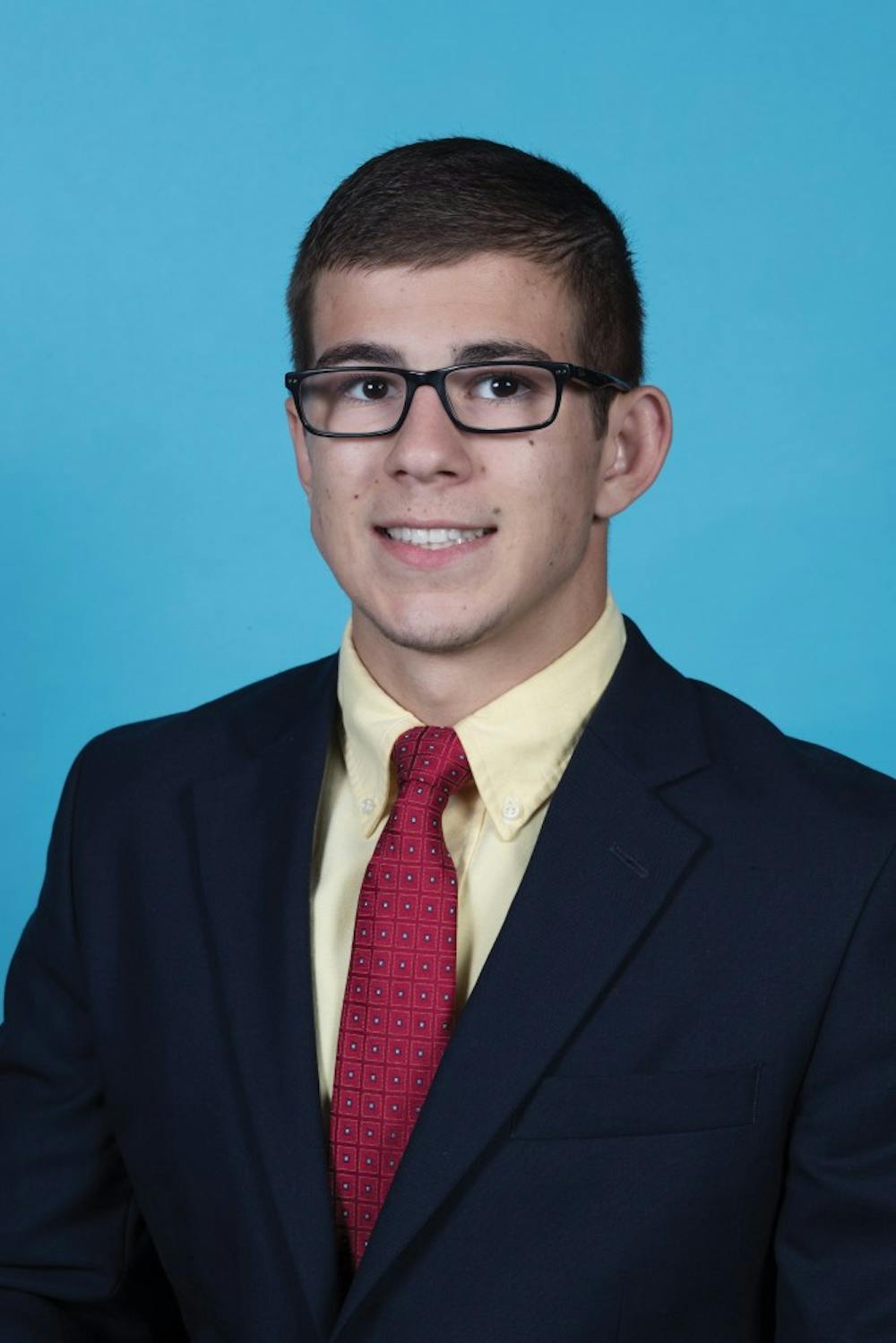The new members of Penn wrestling’s freshman class boast sterling resumes, ranging from academic honors to athletic success. The task of achieving such a balance in college, however, is not so simple.
Along with hailing from some of the country’s best high school programs, including No. 2 Wyoming Seminary, No. 7 St. Edward and No. 16 Carl Sandburg, the newest Quaker grapplers have backed up their Division I status with plenty of hardware. Freshman Patrick Munn was crowned as the 2016 National Prep School champion at 138 pounds. 125-pounder Carl Atrassian graduated with a stellar 200-26 record and three top-four state championship finishes. Jack Conway led his team to two Ohio state championships and garnered two top-four distinctions at the individual state tournament.
But, as coach Alex Tirapelle mentioned, achievement on the mat represents just the first qualification for entry into Penn’s wrestling brotherhood. In the tradition of the student-athlete, the Quaker freshman class includes Academic All-Americans, Honor Society members, and Cum Laude graduates.
“It’s Penn. We look for excellence in both [athletic prowess and academic strength]. That’s usually the first hurdle for us,” Tirapelle said.
“We’re obviously looking for good athleticism and wrestling potential but it all starts with a good academic profile and good academic standing. Right away, with that filter, we’re looking at less than 10 percent of all high school wrestlers across the country.”
These smarts will help the collegiate neophytes fulfill their main objective for the season: to learn.
“Right now, I’m focused on getting better. It’s a big jump from high school to college, and I’m trying soak up as much knowledge as I can from the older guys on the team and evaluate at the end of the season,” Conway reflected.
149-pounder Jon Errico echoed his fellow freshman’s statements.
“I want to take advantage of the coaching staff and all the guys in the room. We have the PRTC [Pennsylvania Regional Training Center] here so I hope to take advantage of coach [Brandon] Slay,” he said. “And I definitely want to focus on my feet, working on my stance in motion, handfighting, working on my defense. I have to hold my ground because when it comes to an older guy, bigger guy, I don’t want to get tossed around.”
The coaching staff that guided Penn to its best NCAA championship performance in a decade should provide valuable insights for the freshmen, under the supervision of Tirapelle. And, as Errico alluded to, the presence of Penn’s finest ever wrestler will supplement a year-long crash course on the ins and outs of collegiate wrestling.
Brandon Slay, the newly minted PRTC Executive Director, graduated from Wharton as a two-time Ivy League Wrestler of the Year and reached the pinnacle of athletic achievement with a Gold Medal win in Freestyle Wrestling at the 2000 Sydney Olympics. In his new role, in which he oversees the `training of elite wrestlers from the Mid-Atlantic region, Slay will often return to his old stomping grounds, bringing with him a wealth of knowledge and a train of Olympic hopefuls looking to grapple with their Penn counterparts.
Practice aside, this particular class of eight freshmen will likely be called upon early and often as the season wears on. The graduation of several key performers, notably C.J. Cobb and Lorenzo Thomas, has left massive holes in the roster. While senior 2016 All-American Casey Kent and NCAA qualifier May Bethea can consistently submit dominant performances, the rest of the roster is more unpredictable.
Tirapelle, however, intimated that the freshmen have not been shy about buying into his system and demonstrating their commitment.
“The most noticeable thing for me for this class is that they don’t seem like they are going to take a back seat to anyone,” Tirapelle said with enthusiasm.
“They’re on the same page as the rest of the team right away and they’re working hard. They have established goals. They’ve adopted the team culture. It’s not easy to identify who the younger guys are because they’re working just as hard as the guys who have been here for a while.”
Perhaps the biggest challenge for the newest members of the Red in Blue is one that faces all students entering the Penn bubble. Finding a balance and establishing a support system is crucial to success in the demanding atmosphere that an Ivy League school creates.
According to Errico, however, he and his freshmen teammates have already established a chemistry that extends well beyond the wrestling room. “I knew some of the guys before we even came to Penn. ... We study together, we eat together, and it’s all one big group.”
Both Errico and Conway also emphasized that the veterans on the team have stepped up and helped them assimilate into the rigor of Penn wrestling.
“For me, Joe Velliquette [has been a mentor]. I come in the mornings, wrestle with him, and it’s the tiniest things. He’s not pointing out huge holes in my game but just tiny things that added up will overall make me a lot better.”
Errico mentioned that Bethea and senior Marc Mastropietro emerged as leaders in the preseason and as exemplars of the conditioning need to succeed in the collegiate ranks.
“In the preseason runs, the goal for us was to try stay up with those guys. They were always in the lead. But everyone in general is doing a really good job with motivating the freshmen to be the best that they can be.”









